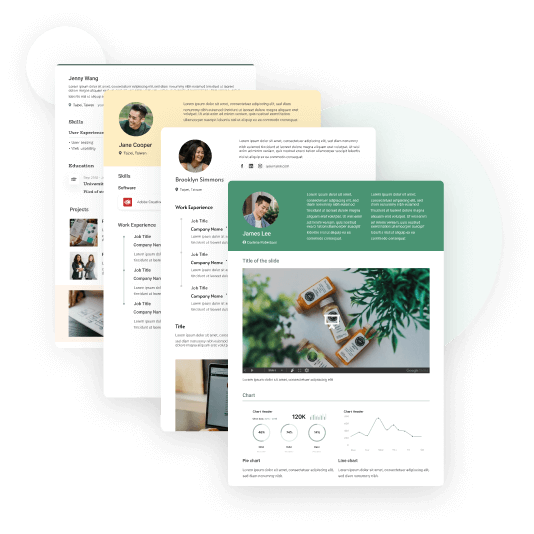50+ Hobbies and Interests in Resume for Freshers [2023 Latest Update]
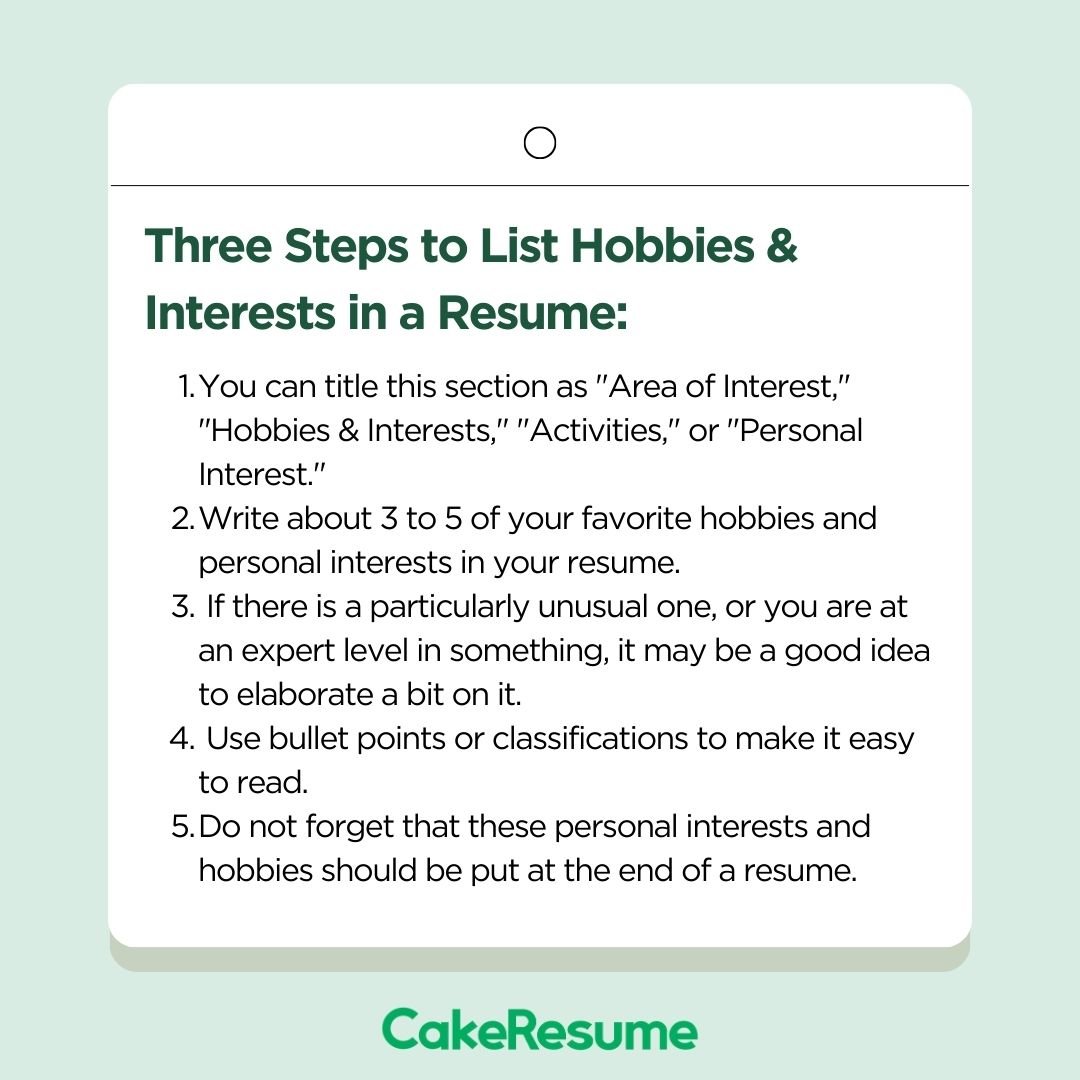
Including a hobbies and interests section on your resume is often discouraged by career coaches and experts. But did you know that if done correctly, this section can help you stand out from the crowd and land you an interview? This is especially true, especially for freshers who have little or no work experience.
In this article, you will learn about how to craft a compelling hobbies and interests section for your resume as a fresher. We have also compiled a comprehensive list of 50+ examples for ten different professions for your reference.
Eager to find out? Continue reading to know more!
TABLE OF CONTENTS
What's a Hobbies and Interests Section on a Resume
Now before going to the details, let's first understand the definition of a hobbies and interests section on a resume.
- What are Interests? Interests are subjects that captivate you and pique your curiosity, leading you to learn more about them. They are usually centered around exploring ideas, concepts, and knowledge, such as history, animal behavior, or pop culture.
- What are Hobbies? Hobbies are activities done for enjoyment and relaxation rather than professionally or for monetary gain. They typically include collecting stamps, engaging in creative and artistic endeavors, playing sports, or exploring ideas and knowledge.
If you notice the pattern, hobbies, and interests are often pursued outside of work and have nothing to do with your bottom line; hence, it's generally recommended not to place too much emphasis on them when presenting yourself professionally (recruiters are also advised not to pay too much attention to this section).
However, things are changing now. Many companies now seek employees who fit in with their culture and values rather than just having relevant work experience. For example, Google looks for open and playful people, suggesting that including your hobbies and interests on your resume could enhance your chances of landing a job there.
So, does that mean the hobbies and interests section is a must on a resume now? The answer to this question is a bit tricky. The answer is not a simple yes or no, but rather depends on your work experience, background, and the specific job you're applying for. Ultimately, the decision to include this section should be based on careful consideration of these factors.
For example, if you're an experienced professional applying for a buttoned-up law firm, it may be best to skip this section as it is often deemed irrelevant and unprofessional. However, if you're a fresh graduate seeking jobs in the creative industry, it's advisable to add relevant hobbies and interests to make you stand out from the crowd. This is particularly true if your hobbies or interests are unique and can bring you a competitive advantage.
What Are the Advantages of Adding Hobbies and Interests to Your Resume?
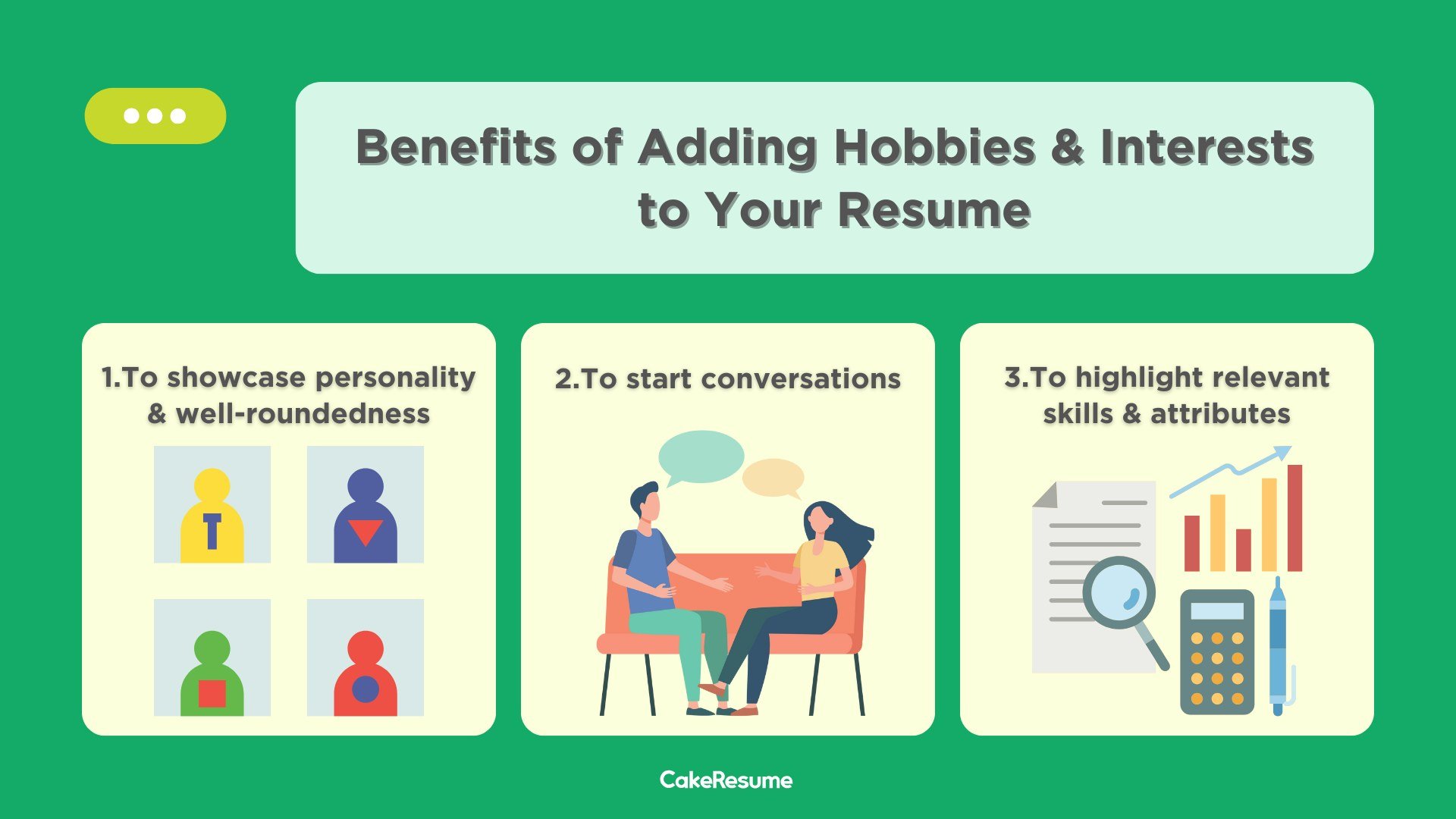
There are multiple good reasons why you should consider adding hobbies and interests on your resume, especially if you're a fresh grad, some of which are:
- Showcase Personality and Well-Roundedness: This section provides a glimpse into your personality and interests outside of work, allowing employers to see you as well-rounded. It can help you stand out and create a more memorable impression than a purely professional resume. For example, mentioning interests like volunteering, painting, or playing musical instruments can indicate qualities such as creativity, teamwork, or a commitment to giving back to the community.
- Conversation Starter: Your interests and hobbies can serve as excellent conversation starters during interviews. Employers often use this section to break the ice and engage in a more casual and personal discussion. Sharing common interests with the interviewer can establish a positive rapport and make the interview experience more enjoyable, potentially increasing your chances of being remembered and hired.
- Highlight Relevant Skills and Attributes: Some hobbies and interests can demonstrate valuable skills or qualities that are transferable to the workplace. For instance, participation in team sports may highlight your teamwork and leadership abilities, while a passion for blogging or photography can showcase your communication and creativity. The key is to tailor your hobbies and interests to align with the job you're applying for. It can help you emphasize skills and attributes relevant to the position, making you a more appealing candidate.
Pro Tip 💡 If you're a freelancer working in the creative industry, it's highly recommended to add hobbies and interests to your resume and portfolio.
Where Should the Hobbies and Interests Section Locate?
The "Hobbies and Interests" section of your resume should be placed at the end. This is because the recruiter's primary interest lies in your work experience, skills, and educational background. Once they've assessed your qualifications, then they may want to learn more about your personal traits through this section. This will help them determine if your interests align with the position, and if your personality will be a good fit for the role.
Pro Tip 💡 If you've included the "References" or "Declaration" section in your resume, the "Hobbies and Interests" section should be put right before them.
How to Properly List Hobbies and Interests on a Resume?
Step 1 🖋️ Research the Company
It's essential to consider the company you are applying to when selecting hobbies to put on your resume. Before deciding on what to list, research the company's style of employment, values, and candidate requirements. By doing so, you can determine whether your interests match with the company's values and present yourself in the best possible way.
Additionally, if you know the name of the recruiter, take a look at their social media profiles, such as LinkedIn, to gain valuable insights into their preferences and interests. You might just pick up that golden nugget about their favorite sports team.
Remember, the goal is to impress the employer with your personal interests, so choose wisely.
Step 2 🖋️ Be Smart About Which Hobbies and Interests to Showcase
The primary criterion for selecting hobbies and interests for your resume is their relevance to the job you're applying for. Think about how your hobbies align with the skills and qualities required for the position. For example, if you're applying for a marketing role, mentioning your hobbies of photography and filming can be highly relevant.
Remember to tailor your list of hobbies and interests for each job application. Emphasize the ones that align best with the specific job description and the company's culture.
Pro Tip 💡 Choose hobbies or interests that can demonstrate transferable skills can be highly beneficial, especially for fresh graduates.
Step 3 🖋️ Properly Format the Hobbies and Interests Section
There are different ways to present your personal interests in your resume, such as using bullet points, icons, or paragraphs. Each option has its advantages and disadvantages.
- Bullet points: Bullet points work well when you want to list your hobbies and interests with minimal or no description. While this is easy on eye, it might lack of information if you're good at writing.
- Icons: Icons are great for creating a visually appealing resume that showcases your creativity. However, you should consider the company culture before using icons as they may come across as informal or unprofessional in some industries, plus it's not ATS-friendly.
- Paragraphs: If you have a lot of blank space on your resume, you can use paragraphs to fill it up. However, keep in mind that this format may not be as attention-grabbing as bullet points or icons.
Pro Tip 💡 Ensure there are no spelling, grammar, or punctuation errors in your resume as it can negatively impact the recruiter's perception of your attention to detail.
Tips to Turn Hobbies and Interests Section More Interesting for Freshers
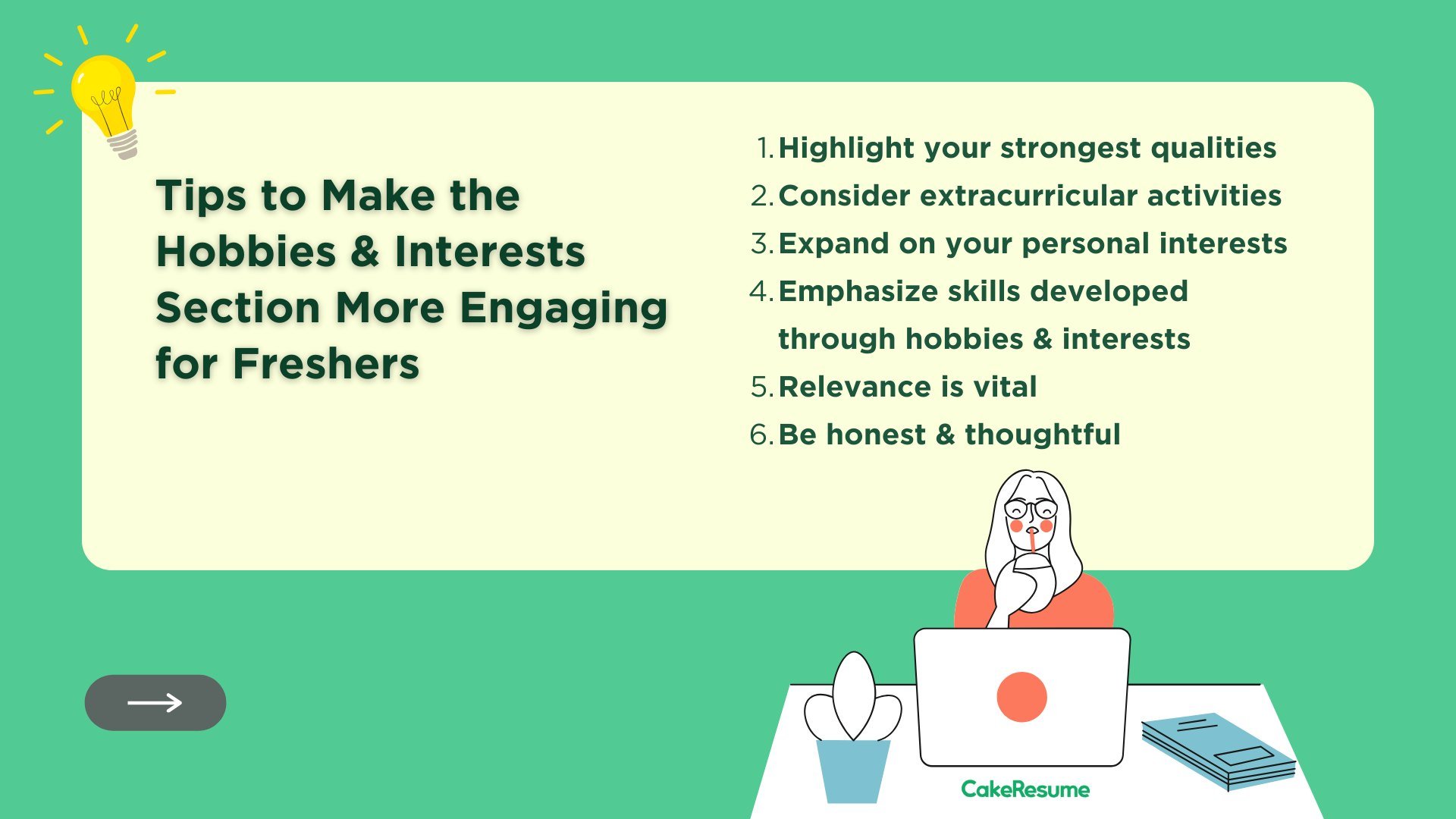
Writing resume is hard already, and now you have to tailor your hobbies and interests section to make it more compelling? Well here are some tips for freshers to turn the plain hobbies and interests section into something appealing and make the most out of it.
1) Show Off Your Most Impressive Qualities.
When writing a resume or CV, including hobbies and personal interests can be compared to putting together a sales pitch for yourself. The first step is to identify your strengths and talents, regardless of whether they are professional or not. Once you have a list, match them with the criteria listed in the job advertisement for your dream job.
For instance, if you enjoy blogging, it shows that you have strong creative and communication skills – qualities that would benefit a journalism career. If you don't have any work experience, it's easy to become discouraged, but don't be. Recruiters don't only look for work experience; personal skills are equally essential. Therefore, including your hobbies and interests in your resume can be an excellent way to grab a recruiter's attention.
Think of your resume as a sale pitch; every section on your resume should sell itself. Try to promote yourself by showcasing your hard-earned skills and team-oriented interests.
Pro Tip 💡 If your hobbies and interests involve continuous learning and personal development, it can be a positive signal to potential employers — your commitment to self-improvement and staying updated in your field.
2) Think of Extracurricular Activities as Hobbies or Interests
If you don't have any work experience, don't worry! There's still a way to make your resume look professional. You can write about any role or activity you have participated in as a hobby, either at school or during your free time.
For instance, you can mention any workshops you have attended, any voluntary work you have done for your local community, or any hobby clubs you have organized. Make sure you include details about how long it took you to learn the skills you have developed and how skilled you are now.
Pro Tip 💡 If your hobbies involve volunteering or community service, it showcases your social responsibility and commitment to giving back. This can be particularly attractive to employers who value corporate social responsibility.
But remember to be selective when using extracurricular activities as hobbies or interests; not all activities are hobbies. You can create a whole section for this category on your resume.
3) Elaborate on Your Personal Interests
Including personal interests on your resume should not be limited to a simple bullet-point list. Instead, you can provide a detailed and comprehensive explanation of your favorite hobbies.
For instance, if you enjoy theater, you can write about your participation in a drama, your role in the production, your sense of responsibility towards the cast, and your ability to contribute effectively to the play. Similarly, you can elaborate on your involvement in a specific project, such as organizing a monthly bake sale for a local non-profit organization, regularly hiking with a club, or starting a podcast.
By highlighting these activities, you can showcase your strengths and positive qualities to potential employers, setting yourself apart from other candidates and gaining a competitive edge. As a result, you increase your chances of standing out among your peers and securing a job after graduation.
Pro Tip 💡 It's essential to exercise discretion when selecting hobbies. Avoid mentioning hobbies that could be controversial or unrelated to the job. For example, discussing politically sensitive topics or hobbies that may be considered risky or unsafe is generally not advisable.
4) Focus on Skills Obtained via These Hobbies and Interests
In the competitive landscape of today's job market, the emphasis has shifted from mere job titles to the rich tapestry of skills you bring to the table.
So, instead of just plainly listing out a bunch of hobbies and interests, focus on highlighting the skills you gained via these hobbies and interests. The practical competencies you've honed define your value to potential employers.
Pro Tip 💡 Mentioning hobbies that reflect an appreciation for different cultures, languages, or travel experiences can signal your openness and adaptability. In a globalized world, these qualities can be highly valuable.
5) Relevance is the key to success.
As aforementioned, the key to success is relevancy when it comes to selecting hobbies and interests. Suppose you're aiming for a computer programming role; mentioning your interest in watching soap operas is irrelevant.
With that being said, try avoid the vague. Instead you should embrace the specifics. It's important to go beyond surface-level mentions and delve deep into the specifics. You should reveal why these pursuits enrich your character and work in synergy with your professional aspirations. By doing this, you can illuminate how your passions, whether they're in art, sports, or other areas, can elevate your problem-solving skills, creativity, or ability to work in diverse teams.
By illustrating these connections, you not only differentiate yourself but also demonstrate your potential as a valuable asset to prospective employers.
Pro Tip 💡 While you want to showcase relevant hobbies, be mindful of space on your resume. Your resume should remain concise and focused on your qualifications for the job. Select a few key hobbies that provide the most compelling evidence of your suitability for the role.
6) Embrace Honesty and Be Thoughtful When Listing Hobbies and Interests
It's crucial to be honest and truthful in your narrative, but at the same time, it's equally important to be discreet while sharing personal details. For instance, while you love to party late at a local nightclub, it's wise to consider how such information reflects on your professional image. To create a well-rounded and thoughtful persona, balancing honesty and discretion while sharing personal hobbies and interests is essential.
Pro Tip 💡 Choose hobbies and interests that genuinely reflect your passion and interests. When you discuss them during an interview, your enthusiasm will come across as authentic, which can be appealing to employers.
List of 50+ Hobbies and Interests for Different Professions
Did you know that certain hobbies and interests can be seen as indicators of good character traits? In fact, including these interests on your resume can make a positive impression on recruiters. Here is a top 5 best hobbies and interests to include on your resume:
Yoga
If you are applying for a job in advertising, public relations, or any other industry with a fast-paced work environment, having yoga as a hobby can be a significant advantage. This is because individuals who regularly practice yoga are believed to possess excellent self-control and can better handle pressure while working.
Painting
If you have a passion for painting, don't hesitate to include it in the interest section of your resume. People who can paint usually have a good artistic and design sense, which is crucial for positions like designer or marketer.
Videography
Videography is not only a hobby but also a valuable skill that can improve your chances of getting hired by companies, particularly in the visual entertainment industry. It is widely recognized that videographers are highly sought after due to the surge of social media.
Extreme Sports
Do you have a passion for outdoor activities like mountain biking, skydiving, or bungee jumping? Including these interests in your resume could prove beneficial when applying for certain positions. For instance, it could help you stand out as a candidate for jobs that require physical strength, personal fitness trainers, or tourist guides. So, don't hesitate to showcase your hobbies in your resume, as it could earn you a stamp of approval from recruiters.
Playing an Instrument
If you're passionate about playing musical instruments, it can greatly benefit your job prospects as a music producer, recording engineer, music therapist, music critic, or even an instrument maker or repairer.
Looking for more examples of hobbies and interests? Check out these 50 interesting options to add to your resume as a fresher!
1. Hobbies and interests in resume examples for Software Engineers :
- Illustrating
- Hackathons
- Video games
- Board games
- Building robots
2. Hobbies and interests in resume examples for Graphic Designers :
- Music
- Editing
- Drawing
- Traveling
- Photography
3. Hobbies and interests in resume examples for Data Analysts :
- Reading
- Sharing ideas
- Programming
- Strategy games
- Analyzing sport betting markets
4. Hobbies and interests for Teacher resume examples:
- Writing
- Reading
- Mentoring
- Public speaking
- Leading extra-curricular activities
5. Resume hobbies and interests examples for Nurses :
- Yoga
- Reading
- Volunteering
- Community service
- Learning first aid knowledge
6. Resume hobbies and interests examples for Customer Service :
- Gardening
- Public service
- Public speaking
- Meeting new people
- Cataloging collections of antiques
7. Resume hobbies and interests examples for Marketing :
- Writing
- Photography
- Video production
- Learning languages
- Social media events
8. Resume hobbies and interests examples for Sales :
- Socializing
- Team sports
- Playing chess
- Public speaking
- Strategic mind games
9. Resume hobby and interest examples for Administrative Assistants :
- Reading
- Blogging
- Scrapbooking
- Keeping a diary
- Collecting stamps
10. Resume hobby and interest examples for Managers :
- Yoga
- Traveling
- Puzzle games
- Public speaking
- Strategic games
Conclusion
In conclusion, including hobbies and interests in your resume serves as a valuable window into your character and personality. When utilized effectively, this section can leave a lasting positive impression on hiring managers and recruiters. It offers a unique opportunity to distinguish yourself from other candidates by showcasing your passions and the qualities they represent.
Remember, the hobbies and interests you choose to share not only provide a glimpse into your life outside of work but also reflect the genuine, multifaceted person you are. So, don't hesitate to embrace this aspect of your resume, as it can be a powerful tool to convey the depth and authenticity of your character to prospective employers.
We hope that this article has been helpful. Want to have more career advice? Make sure to follow our blog for insightful advice!
CakeResume provides a free online resume builder that allows you to create resumes and portfolios with ease. You can start building your resume from scratch or use our ATS resume template to create the perfect resume for your job hunt! Take your career journey to new heights - create a resume online (free download) now!
More Career and Recruitment Resources
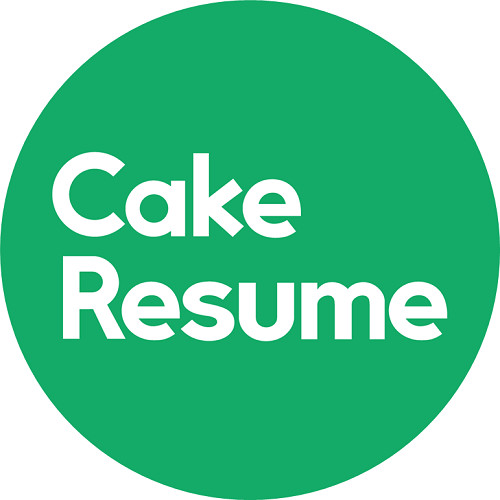
With the intention of helping job seekers to fully display their value, CakeResume creates an accessible free resume/CV/biodata builder, for users to build highly-customized resumes. Having a compelling resume is just like a piece of cake!






